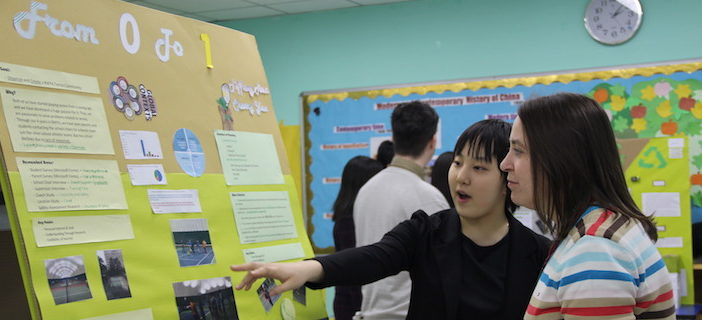Every springtime at Beijing World Youth Academy (BWYA), the green shoots of many hours of hard work blossom into Personal Project exhibitions at both the Wangjing and Lido campuses. Students in grade 10 put together innovative and creative displays to share with the school community, presenting the findings of their independent learning. And in typical BWYA style, the diverse range of projects reflect each student’s passion for their local traditions and customs, as well as their global awareness. “Locally grounded, globally aware” hasn’t become BWYA’s motto for nothing!
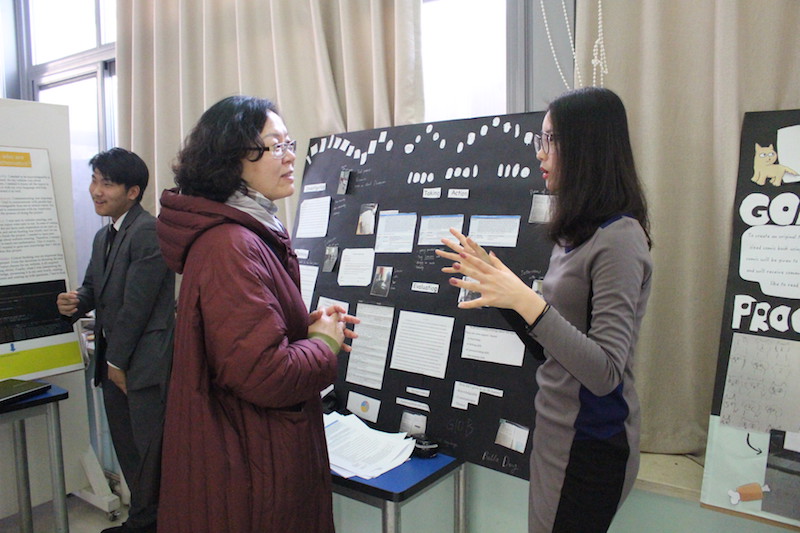
Grade 10 students presented their Personal Projects at the Wangjing and Lido campuses to the BWYA community
The Personal Project (PP) is an integral part of the MYP programme, which gives students the opportunity to pursue their passions from an academic point of view and to then present their findings back to the school community. Designed as an independent learning experience, on which students typically spend 25 or more hours, the PP requires students to develop skills such as self-management, research, and communication, as well as critical and creative thinking.
Reuben Haggar teaches English at BWYA and is also the School’s MYP Projects Coordinator. He explains, “The projects put the students’ learning in their own hands in two important ways. First, they have a choice about what they pursue, which is different than most class-related assignment they have to do. When you have choices, you work harder, engage more, and take more away from your learning experience. Second, the students are responsible for everything they do in the project. Unlike classwork, there is no one telling them exactly what and how to research, plan, execute, or reflect; they get guidance but mostly have to manage their own time and project by themselves. This develops their sense of responsibility, which of course they’ll need in the future in later classes and in real life after university.”
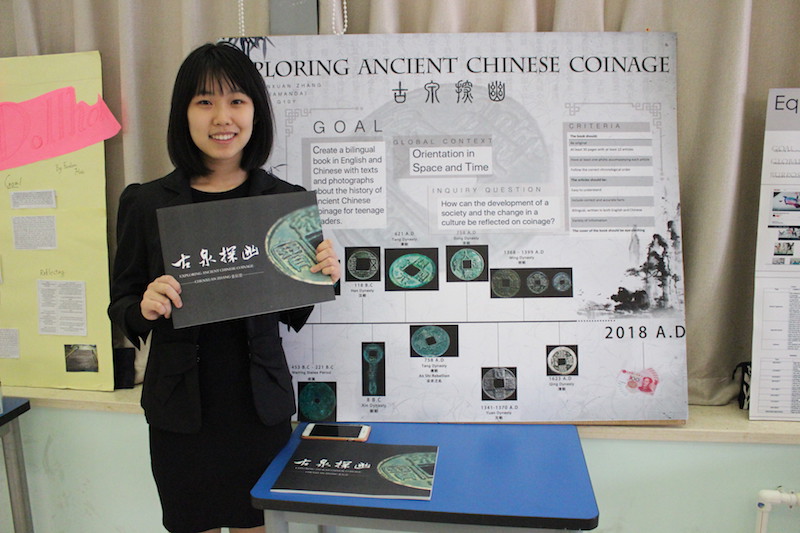
Grade 10 student Amanda Zhang with her project
For her Personal Project, grade 10 student Amanda Zhang took a local tradition and placed it in a global context when she was inspired by her grandfather’s collection of ancient Chinese coins and a passion for traditional Chinese culture to create a book about their history. She produced the book herself, including all of the copywriting and photography. She spoke about some of the challenges of the Personal Project and how to overcome them.
“Good time management is key,” said Amanda. “I started working on my personal project in the summer and I still had work to do at the last minute. It’s important to pick a subject that you love as this keeps you motivated.”
“The fact that students get to choose their own topic and pursue their own goal is such a helpful break from the rigors of IB classes.” Continues Mr. Haggar. “Students can dive deeply into something they are passionate about and spend ‘academic time’ doing what they love. This helps foster the students’ perception of the academic in a positive way.”
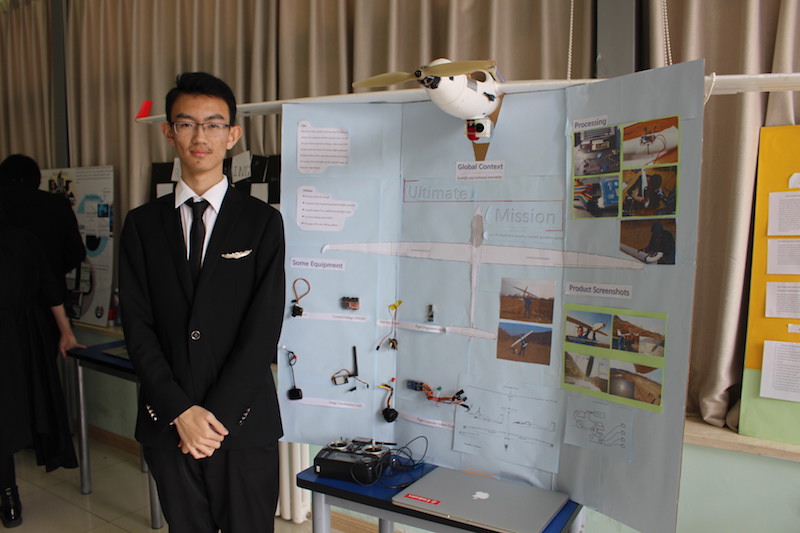
Eric Xu with his project, “Ultimate Mission”
Eric Xu spoke about some of the new skills he had to learn to make his project successful. His project is a great example of some of the technology BWYA students have been incorporating into their projects.
“The title of my project is Ultimate Mission and it was to build and launch a realistic, self-guided glider,” He said. “The model itself was easy to make as I had all the parts 3D printed. And the components, like the GPS tracker and imaging transmission unit, I just had to figure out the best place to install them. I got the balance wrong for the first flight and the glider crashed but for the second flight, everything was fine. The challenge for me was programming the guidance system. I used a simulator on my laptop to model the programme and I must have done this 50 times before I got it right.”
Anna Sun came up with the idea of making a stop-motion video using individual photographs that would represent both old and new Chinese culture for visitors to the Country. Anna visited various locations around Beijing to shoot her photographs and also composed her own music soundtrack to accompany the footage. She said, “I chose this project because I wanted to work on something that I could use to express my view of Chinese culture as well as something that was going require me to learn some new skills that will be useful for me in the future. I had to learn photography techniques, how to create music and then how to use video editing software to combine the music with the video for my project to be successful.
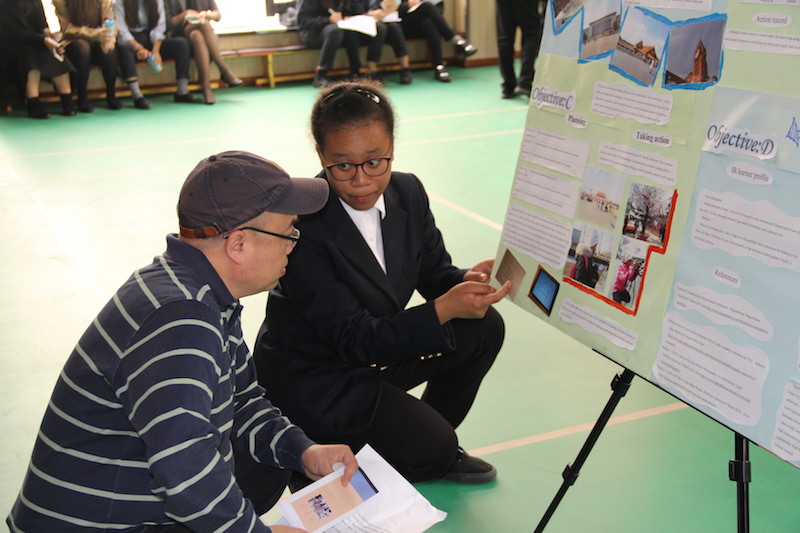
Anna Sun presents her stop-motion video project
“The biggest challenge for me was taking the pictures. I had to make sure the object I was shooting was always in the same place in the frame while I moved around it. This was to make sure it didn’t appear shaky in my film. I figured out a way of solving this problem by putting a transparent film onto the screen of my camera and I could draw a line on this film to show where the object had to be on the screen.
“My project was a lot of fun and I am proud of the final product. I think to make it better though I am going to add a small map to the corner of the screen. That way if any visitors to Beijing are watching it they can see the location on the map.”
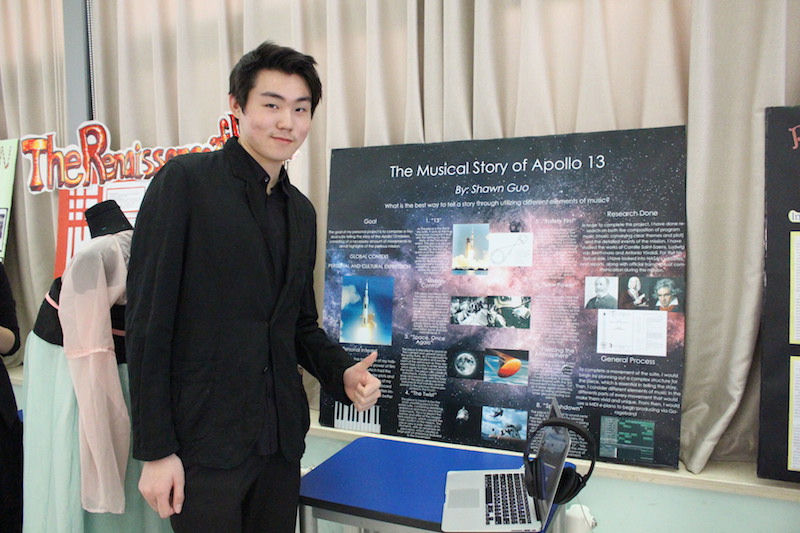
The Personal Project is an outlet for students’ creativity and passion
The PP Exhibitions themselves are a great opportunity for the entire BWYA community to come together and celebrate the work of the students. “The projects are a chance for students to accomplish something that they can be incredibly proud of,” concludes Mr. Haggar. “Many of their teachers and supervisors have never created anything that is produced in the PP, but these students write books and make technology and design clothes; they accomplish something tangible, and in the end, that should result in great satisfaction.”
This post is provided by Beijing World Youth Academy (BWYA)
Photos courtesy of Beijing World Youth Academy (BWYA)

